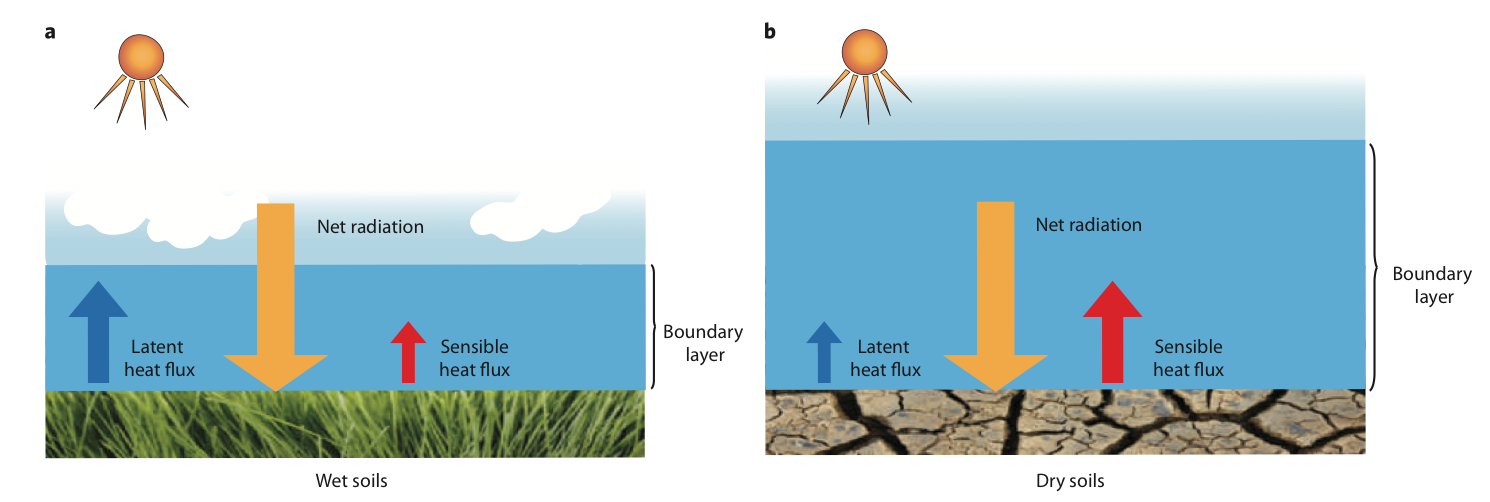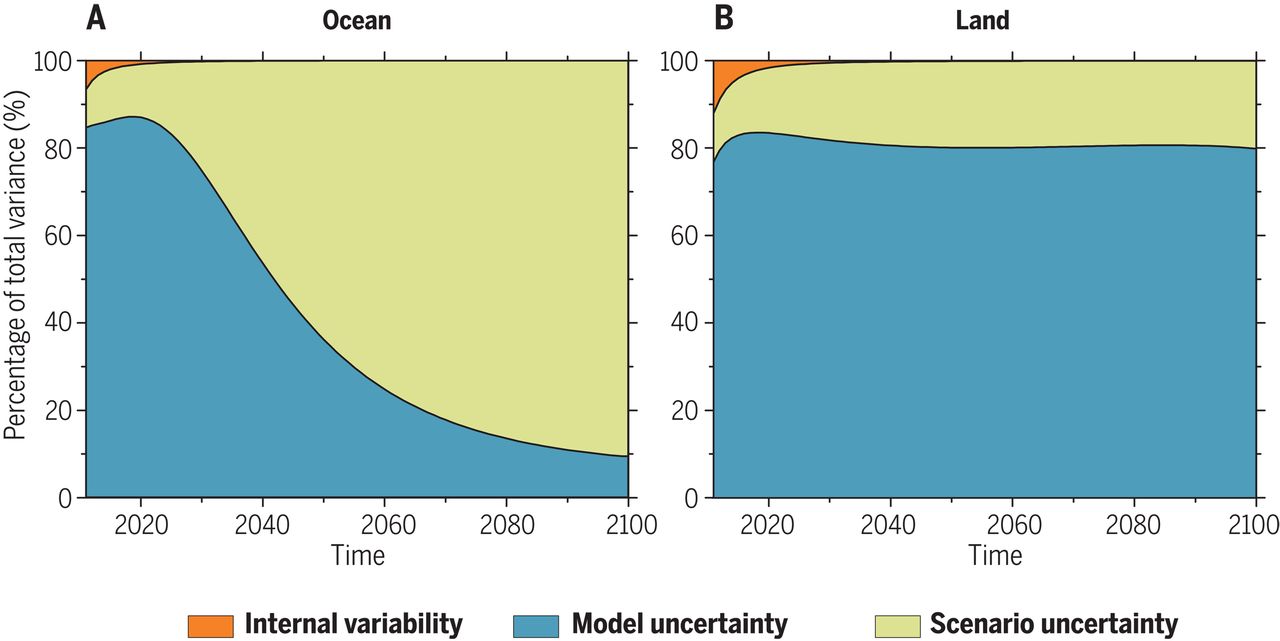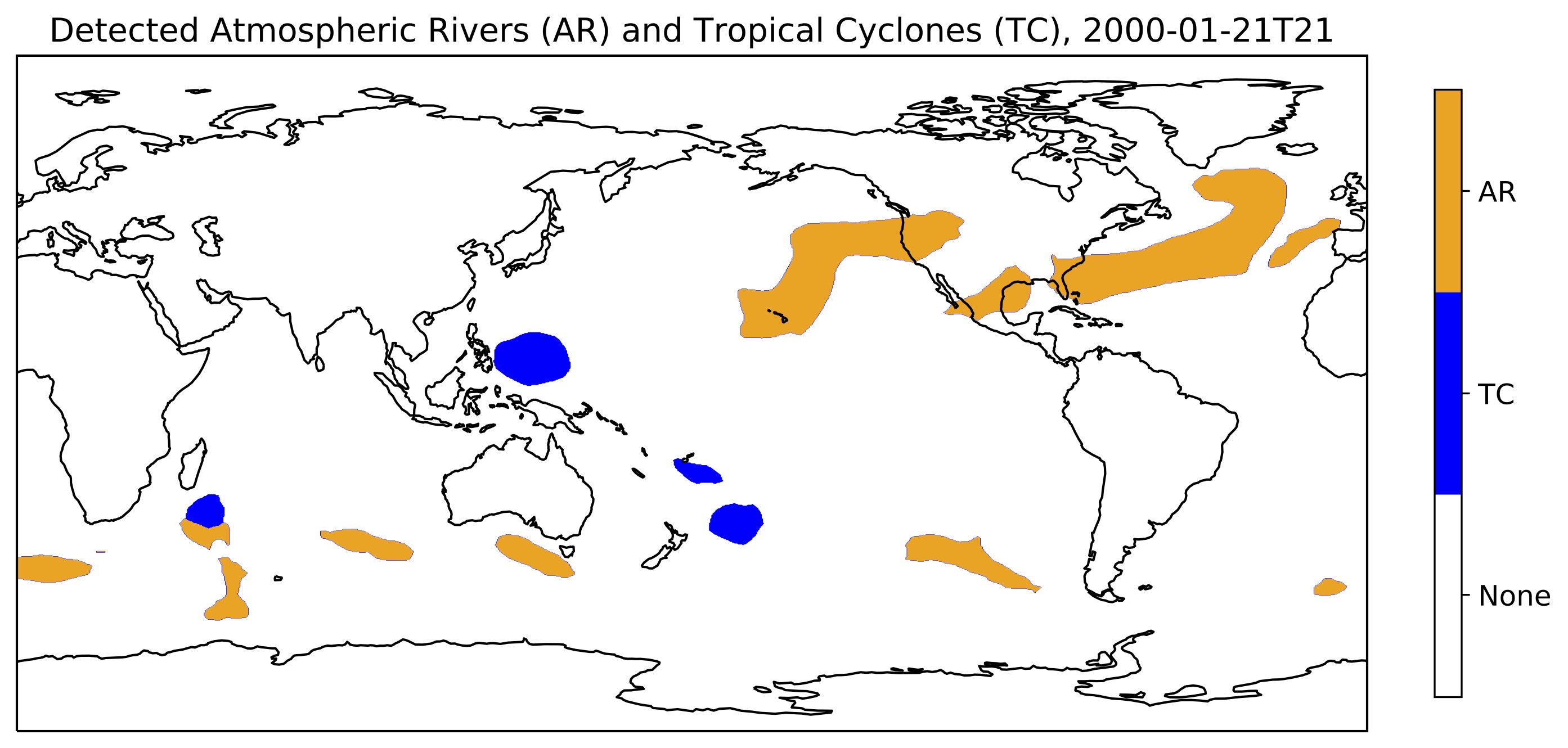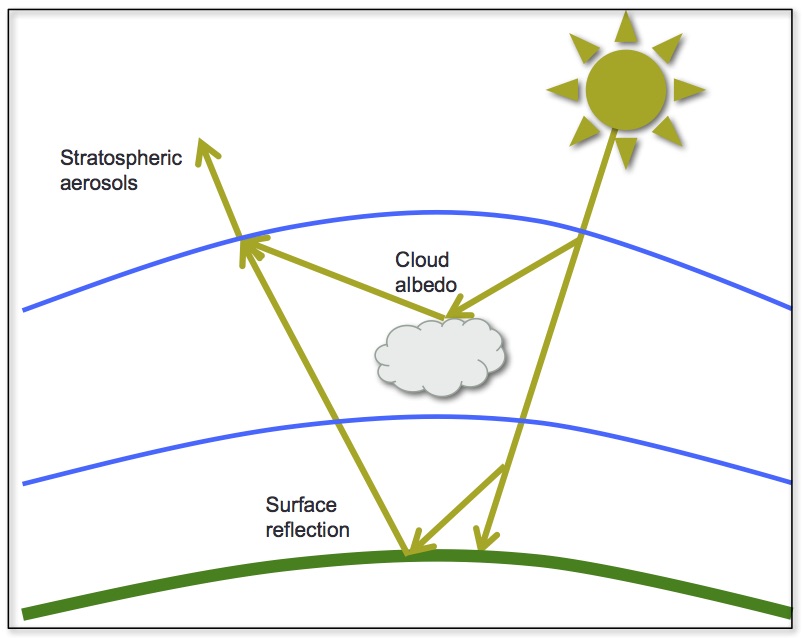As a climate scientist I am interested in many aspects of the Earth system and how they evolve over time. I am most fascinated by interactions between the land surface and the atmosphere, and understanding how terrestrial processes are simulated in Earth system models. My previous work has investigated changes in the surface energy budget, terrestrial hydrologic cycle, and vegetation. Recently I explored the connection between soil moisture and temperature variability, including extreme events such as heat waves and drought (Dagon and Schrag, 2017).

How soil moisture influences surface climate. [Image: Alexander (2011)]

Ocean and land carbon cycle uncertainty partitioned into different sources over time.
[Image: Bonan and Doney (2018)]
There are several different sources of uncertainty in Earth system models. Variations in initial conditions produce internal variability uncertainty, mimicking internal climate processes including stochastic weather noise. Differences in imposed forcing through future scenarios or boundary conditions produce forcing uncertainty, representing the uncertainty in predicting the pathway of future carbon emissions. Inherent model uncertainty encompasses uncertainty in model structure and parameters and represents the various choices in how models use mathematical abstractions of physics, chemistry, and biology to represent processes within the Earth system. While uncertainty in the forcing dominates the ocean carbon cycle over long timescales, the land carbon cycle is dominated by uncertainty in model structure and parameters. Using the latest version of the Community Land Model (CLM5), I am exploring the role of parameter choices in overall land model sensitivity and uncertainty. I recently explored a machine learning approach to emulate and calibrate CLM parameters and help quantify this type of uncertainty (Dagon et al., 2020).
Machine learning tools and techniques have shown great promise for applications in Earth science and climate modeling. As scientists employing these methods, we must be mindful of their use and interpretation, and work to develop ML models that are not intentionally biased. Currently I am exploring how machine learning can apply to climate modeling in several ways: 1) model emulation and calibration, 2) detection of extreme events, and 3) Earth system predictability on a variety of timescales. Recently I utilized a machine learning algorithm to detect weather fronts and study associated changes in extreme precipitation over the U.S. (Dagon et al., 2022).

Extreme events detected in climate model output using a machine learning algorithm. [Image: K. Dagon]

A variety of solar geoengineering methods. [Image: K. Dagon]
Solar geoengineering, or climate engineering, refers to a set of proposed methods to mitigate climate changes from greenhouse warming by manipulating the incoming solar radiation. To fully understand the consequences of solar geoengineering, research is needed to examine the impacts it will have on the climate system and understand how those impacts compare to the climate changes induced by a warming world. My research has explored the climate impacts of solar geoengineering in a modeling context, focusing in particular on land-atmosphere coupling, terrestrial water cycling, regional climate variability, and vegetation-climate interactions (e.g., Dagon and Schrag, 2016; Dagon and Schrag, 2019).
My primary research tool is climate modeling. In particular I use the Community Earth System Model (CESM) to design and run experiments that test the climate response to various forcings. I focus on terrestrial systems, and have utilized many different configurations of CESM to investigate changes in land-atmosphere coupling, hydrology, and vegetation dynamics resulting from climate change.

CESM components. [Image: Alexander and Easterbrook (2011)]